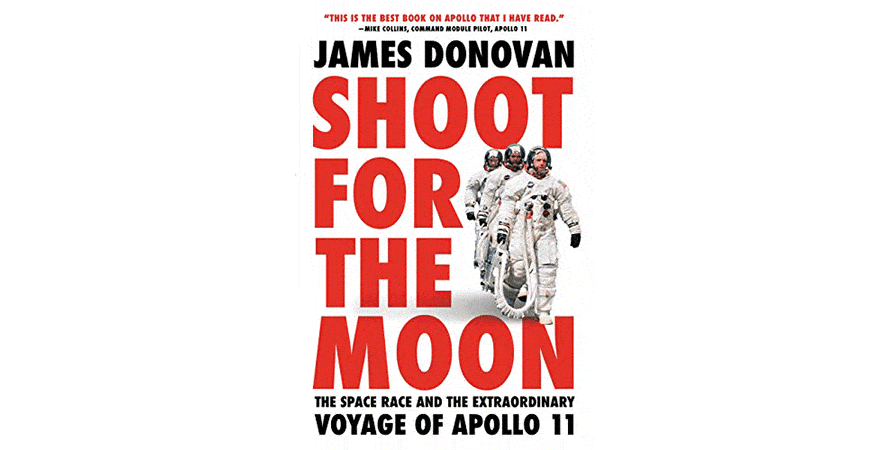Category: Nonfiction
Reviewed by: Clifford R. McMurray
Title: Shoot for the Moon: The Space Race and the Extraordinary Voyage of Apollo 11
Author: James Donovan
NSS Amazon link for this book
Format: Hardcover/Paperback/Kindle
Pages: 464
Publisher: Little, Brown and Company
Date: March, 2019
Retail Price: $30.00/$18.99/$15.99
ISBN: 978-0316341783
The story of the race to the Moon has been told so many times that you might think another book on the subject would be superfluous, but James Donovan shows in his version of this oft-told tale that you’d be mistaken. At the height of the Apollo program, over 400,000 people all across America were laboring to beat the Soviets to the Moon, and many more on the other side of the Iron Curtain were working just as hard to be sure the first words spoken on the Moon were Russian. With a cast of characters this large, there’s always a new way to look at the story, especially for an outsider who’s never done so before. Donovan’s prior books were bestsellers about the Alamo and George Custer, so he’s well placed to offer that fresh perspective.
Donovan begins his story as Wernher von Braun surrenders to the American army while the Third Reich collapses. The German engineer would spend a few years as “prisoner of peace,” shooting V-2 rockets into the skies over White Sands, New Mexico, before becoming an American citizen and working on much bigger rockets for the military. One of those rockets put our first satellite into orbit; three years later, another launched Alan Shepard on a 15-minute suborbital flight, and just eight years after that the Saturn V put astronauts on the Moon. Most of the book follows those astronauts, test pilots called into service to demonstrate that America wouldn’t come in second place when it came to technological achievement. But there’s plenty of room left in Donovan’s account for von Braun and the engineers who built their spaceships, and the men in Mission Control who guided them every step of the way.
President Eisenhower didn’t think it important to join a space race, but his countrymen didn’t agree. President Kennedy’s new administration wasn’t happy about the amount of money it would take to win the race, but he was smart enough to pick a goal distant enough to give the United States time to catch up to the Russians, who were way out in front after Sputnik and the flight of Yuri Gagarin. There was a lot of catching up to do, and the race would cause the loss of both astronauts and cosmonauts before it was over. Donovan traces the race through almost every mission, from Freedom 7 to the splashdown of Apollo 11.
Mind-boggling as it is to contemplate, two generations of Americans have grown up not knowing what it was like to watch people walk on the Moon. For most of them this story will be brand new, but for those of us who remember the events Donovan describes, there are still plenty of new details. The men who performed these epic deeds were real people, so their stories are inexhaustible. For me, the most interesting things in the book were Donovan’s descriptions of the Gemini 8 mission that almost killed Neil Armstrong on his first spaceflight, and the view from the Lunar Module cabin and from Mission Control as Armstrong guided Eagle to a safe landing in the face of computer alarms and communications problems. These scenes are edge-of-your-seat reading.
And who knew that Michael Collins was a rose gardener?
A jacket blurb by Michael Collins calls this book “the best book on Apollo that I have read.” That may be somewhat fulsome praise, but it’s a very good book. Donovan gets just about all the technical details right, which is no small feat for a writer new to this subject, and he knows that any good story is about the people who made it happen. By the time you finish this book, you’ll have gotten to know some of them, including a few you hadn’t before.
© 2020 Clifford R. McMurray
Please use the NSS Amazon Link for all your book and other purchases. It helps NSS and does not cost you a cent! Bookmark this link for ALL your Amazon shopping!



















